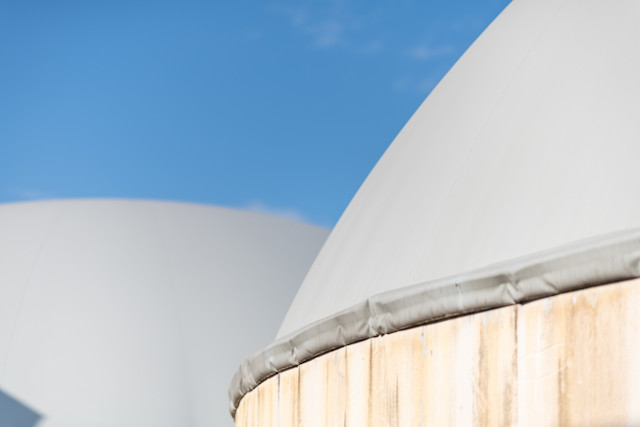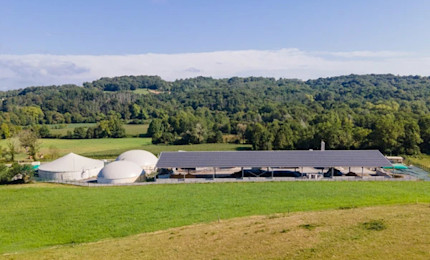Gas emergency 0 800 028 800

Agricultural methanisation: why choose this option?
In addition to accelerating the energy transition by producing locally produced renewable gas to ultimately replace imported fossil natural gas, agricultural methanisation also has benefits for farmers and local areas. Methanisation projects enable waste to be recycled, renewable energy (biomethane) to be produced, stable supplementary incomes to be generated, and non-relocatable employment to be created.
Recycling agricultural waste thanks to methanisation
The methanisation process involves the degradation of organic matter through the action of micro-organisms in the absence of oxygen (anaerobic digestion). Biogas production therefore depends on the inputs used and their methanogenic potential. The possible agricultural inputs to supply a methanisation unit are:
livestock effluents or animal manure: pig and cattle slurry and manure, poultry manure, etc.
crop residues: from maize or cereals, etc.
energy-producing intermediate crops.
You can also use other inputs from the local area, such as organic waste from local authorities (grass clippings, roadside cutting waste, etc.), from the food industry or other farmers and livestock producers, to optimise the profitability of your methanisation project.
If not directly used to generate electricity and heat via the cogeneration principle, the biogas produced in the methaniser can be purified (separation of the CH4 and the CO2) to produce a gas called biomethane that can be injected into the gas grids. It can also be used as a biofuel in bioNGV vehicles and contribute to the reduction of mobility-related pollution.
Storage of agricultural methanisation inputs

Supplementary income through agricultural methanisation
In France, the public authorities are encouraging the development of methanisation from livestock effluents and crop waste. The objective is to promote the ecological transition by supporting the production of renewable energy, in particular by recycling agricultural waste. In order to support any project leader (and the farming world in particular) wishing to opt for methanisation, a feed-in tariff for biomethane injected into the gas grids has been introduced. This mechanism guarantees producers the sale of their biomethane at a tariff set by a government order for a period of 15 years. It is therefore a guarantee of a stable supplementary income.
This feed-in tariff depends on the amount of the yield of the methanisation unit and the nature of its inputs. In France, the establishment of an input premium encourages methanisation projects. However, in order not to divert the primary use of agricultural land, food crops, so-called main crops are limited to 15% of the tonnage of recyclable inputs.

How to prepare your agricultural methanisation project properly?
Teréga helps you develop your methanisation project, from the original study phase to injection into the Teréga gas grid. Discover what you need to do to prepare your methanisation project.
Our experts Jean and Laurent are here to help you make your methanisation project a reality: do not hesitate to contact them!

Do you need help setting up your methanisation project?
Teréga will support you throughout your methanisation project, from the initial design through to connection. Don’t hesitate to contact our experts directly. They will be able to answer all your questions and advise you:
In the Nouvelle-Aquitaine region:
Guilhem Caumette
Mob.: +33 (0)6 22 41 74 01
guilhem.caumette@terega.fr
In the Occitanie and Cantal regions
Christelle Rousset
Mob. : +33 (0)6 72 55 32 30
christelle.rousset@terega.fr






